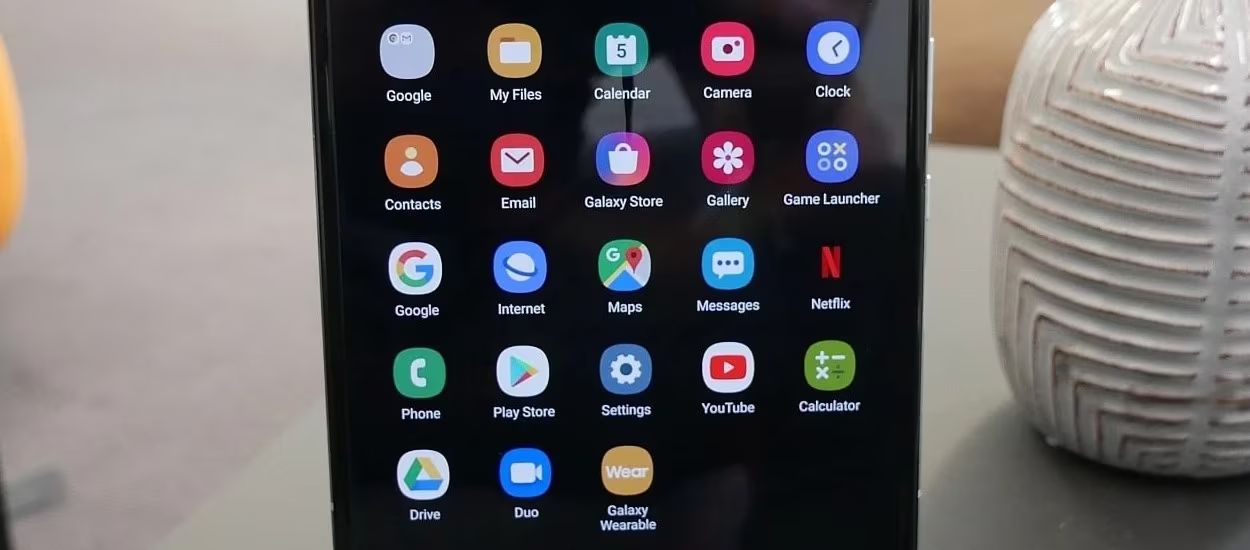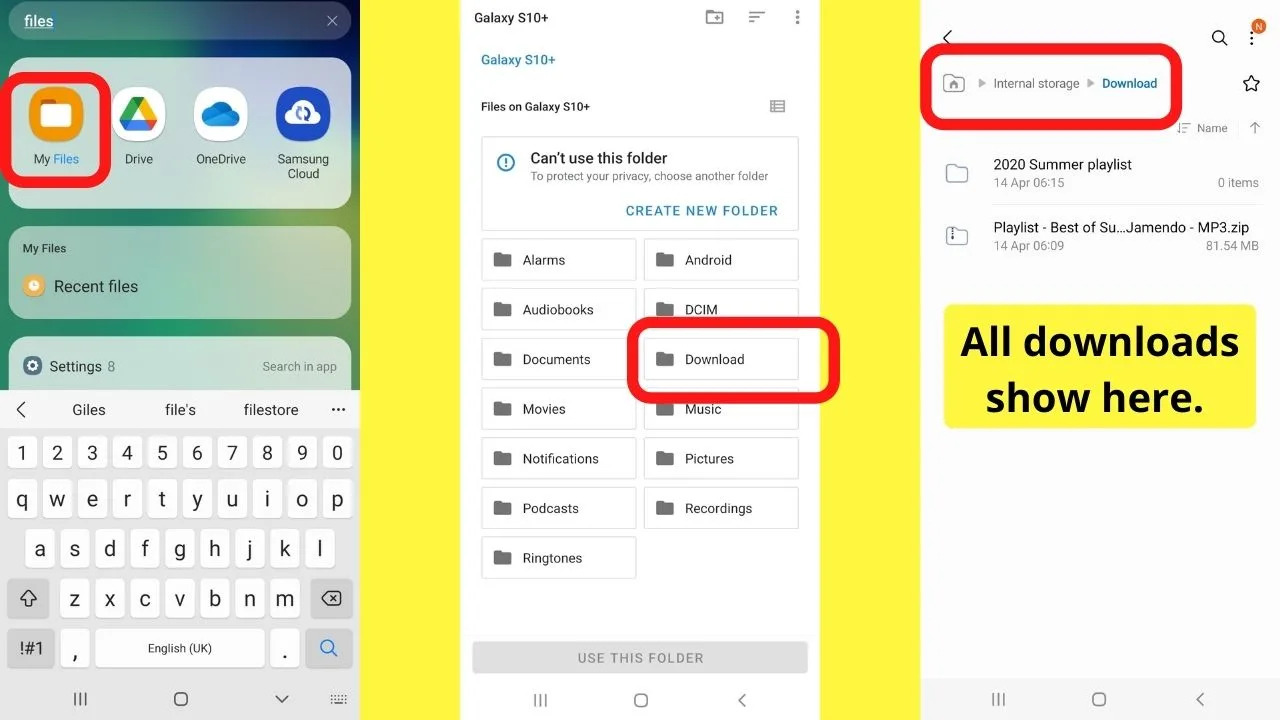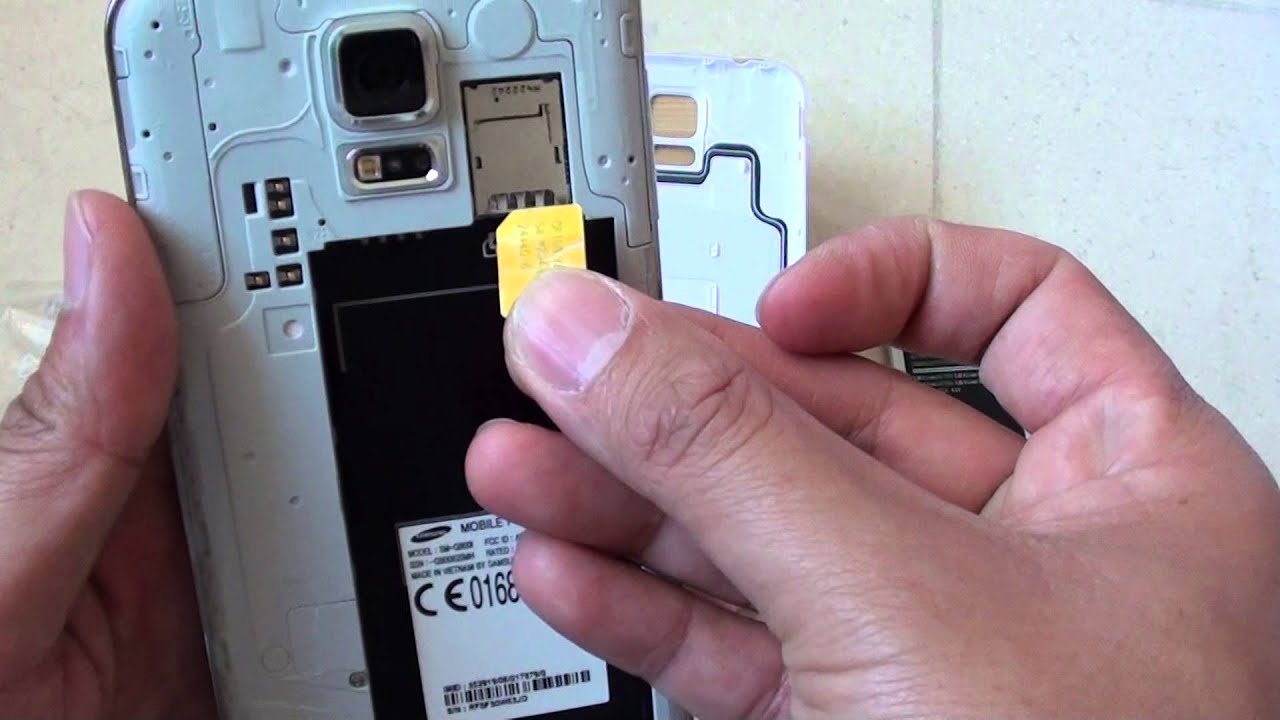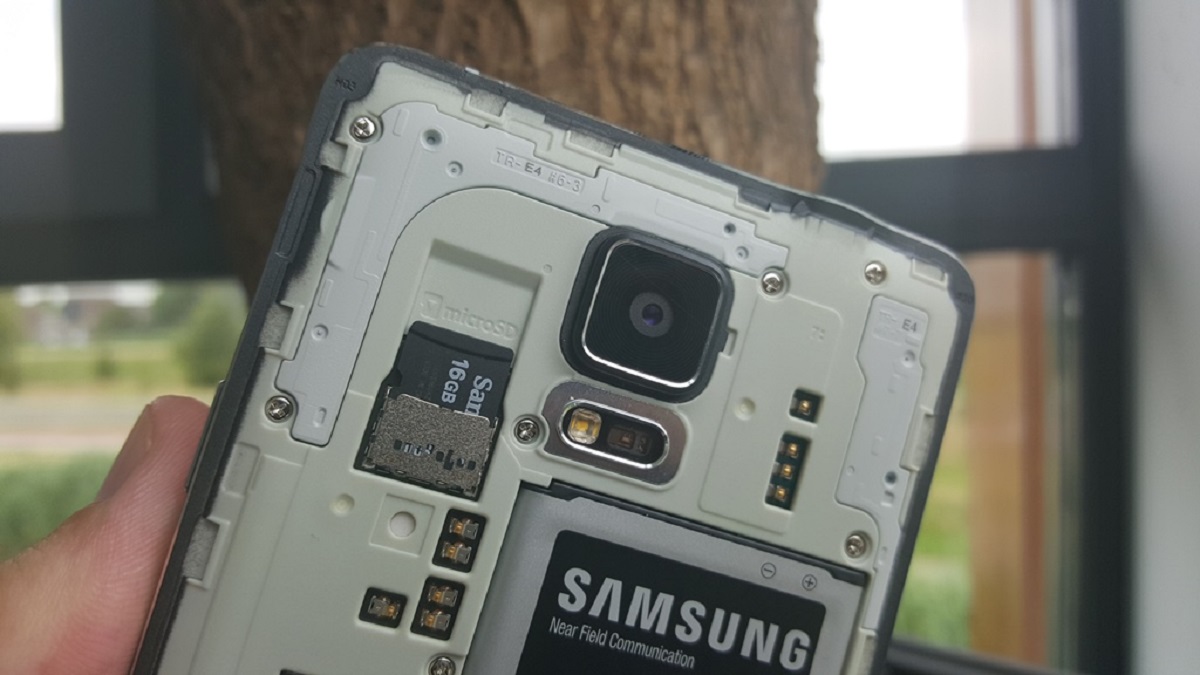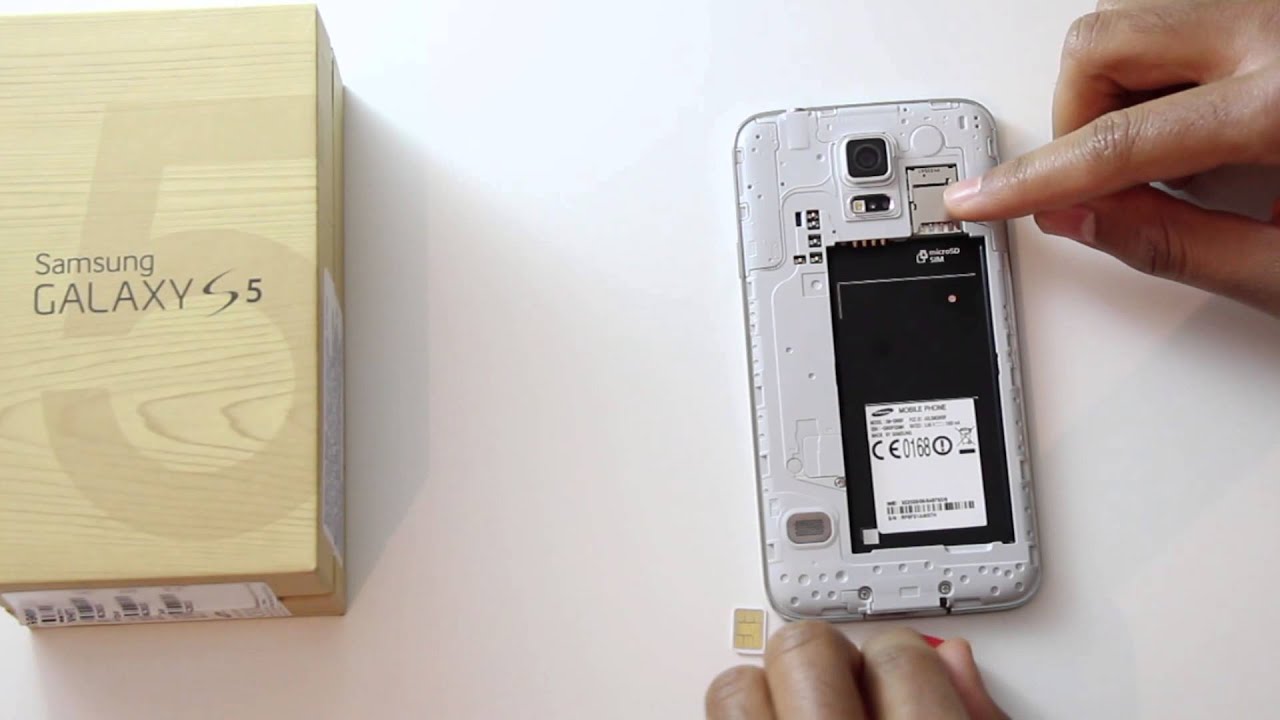Introduction
Are you experiencing a sluggish performance on your Galaxy S5? Is your device constantly running out of RAM? If so, you’re not alone. The Galaxy S5, while a powerful and versatile device, can sometimes struggle with memory management, leading to decreased performance and slower multitasking.
RAM, or Random Access Memory, is a crucial component of any smartphone. It serves as the temporary storage for running applications and processes, allowing your device to quickly access and manipulate data. However, limited RAM capacity can become a bottleneck, leading to performance issues and app crashes.
In this article, we will explore various methods to free up RAM on your Galaxy S5, helping you optimize its performance and enjoy a smoother user experience. Whether you’re a casual user looking to improve multitasking or a power user who frequently uses resource-intensive apps, these tips will help you make the most out of your device’s memory.
Before we dive into the specific techniques, it’s essential to understand that freeing up RAM doesn’t mean deleting or removing data permanently. Instead, it involves clearing temporary files, closing background apps, and optimizing system resources to maximize available memory.
By following the strategies outlined in this guide, you’ll learn how to efficiently manage your Galaxy S5’s RAM and enjoy a more responsive and efficient device.
What is RAM and why is it important?
RAM stands for Random Access Memory, which is a type of computer memory that stores data that is actively being used by the operating system and applications. It acts as a temporary workspace where data can be quickly accessed and manipulated by the processor. Unlike the storage memory (such as internal storage or SD card), RAM is volatile, meaning that its contents are erased when the device is powered off or restarted.
RAM plays a crucial role in the performance and multitasking capabilities of any device, including the Galaxy S5. Here are a few key reasons why RAM is important:
- Running applications: When you launch an app on your Galaxy S5, it is loaded into RAM so that it can run smoothly. The more RAM your device has, the more apps you can run simultaneously without experiencing slowdowns or crashes.
- System performance: RAM directly affects the overall speed and responsiveness of your Galaxy S5. With sufficient RAM, the device can quickly retrieve and process data, resulting in faster app launches, smoother navigation, and improved system performance.
- Multitasking: RAM plays a vital role in multitasking capabilities. It allows you to switch between apps seamlessly without losing data or having to reload apps from scratch.
- App performance: Many apps rely on significant amounts of RAM to function optimally. Insufficient RAM can cause apps to become slow, freeze, or crash frequently.
- Gaming and multimedia: Resource-intensive tasks like gaming or media playback require ample RAM to ensure smooth gameplay, high-quality graphics, and uninterrupted media playback.
Given the importance of RAM in ensuring a smooth and efficient user experience, it is essential to optimize its usage on your Galaxy S5. By employing various techniques to free up RAM, you can improve the device’s performance, enhance multitasking capabilities, and alleviate any performance issues caused by limited memory.
How to check your RAM usage on Galaxy S5
Before diving into the methods of freeing up RAM on your Galaxy S5, it’s crucial to determine how much memory is currently being used by your device. Fortunately, checking your RAM usage on the Galaxy S5 is a quick and straightforward process. Here’s how to do it:
- Open the “Settings” app on your Galaxy S5. You can usually find it in the app drawer or by swiping down on the notification shade and tapping the gear icon.
- Scroll down and select the “Device maintenance” option. On some devices, this might be labeled as “Maintenance” or “Performance.”
- In the Device maintenance menu, tap on the “Memory” option. This will display detailed information about your device’s memory usage.
- On the Memory screen, you’ll find valuable information about your device’s RAM usage. The total RAM capacity of your Galaxy S5 will be displayed, along with the amount of memory being used by apps, system resources, and cached data.
- Additionally, you may see a “RAM status” section that shows the current level of memory usage. This can help you quickly determine if your device is experiencing high memory usage or if there’s still a significant amount of available RAM.
By regularly checking your RAM usage, you can gain insight into how your Galaxy S5 is utilizing memory resources. This information will be helpful in identifying potential memory bottlenecks and determining the effectiveness of the techniques discussed in this guide.
Keep in mind that the RAM usage may vary depending on several factors, such as the number of installed apps, running processes, and device configuration. It’s normal for some memory to be occupied by the operating system and essential background processes.
Now that you’re familiar with checking your RAM usage on the Galaxy S5, let’s explore some effective methods to free up RAM and optimize your device’s performance.
Clearing app cache to free up RAM
When you use apps on your Galaxy S5, they store temporary data in the form of cache files. While these cache files can contribute to faster app loading times, they can also accumulate over time and consume a significant amount of RAM. Clearing the app cache can help free up valuable memory and improve your device’s performance. Here’s how to do it:
- Open the “Settings” app on your Galaxy S5.
- Scroll down and select the “Apps” or “Applications” option.
- In the Apps menu, you’ll see a list of all installed apps on your device. Tap on the app whose cache you want to clear.
- You’ll be taken to the app’s details page. Look for the “Storage” option and tap on it.
- You’ll now see the app’s storage usage, including the amount of space occupied by the cache. Tap on the “Clear cache” button to remove the cache files.
- Repeat the process for other apps that you want to clear the cache for.
Clearing the app cache regularly can help free up a significant amount of RAM, especially for apps that tend to accumulate large cache files. It’s a good practice to check the storage usage of your most-used apps and clear their cache periodically.
Keep in mind that clearing the app cache will not delete any personal data or settings associated with the app. It will only remove temporary files that are no longer necessary.
In addition to the manual method described above, you can also use third-party apps like “CCleaner” or “SD Maid” to clear app caches and perform a more comprehensive cleaning of your Galaxy S5’s storage. These apps offer various additional features for optimizing your device’s performance and managing storage space.
Now that you’ve learned how to clear app cache on your Galaxy S5, let’s explore other methods to free up RAM and improve your device’s overall performance.
Closing background apps to free up RAM
One common reason for high RAM usage on the Galaxy S5 is the presence of multiple apps running in the background. These apps continue to consume memory even when you’re not actively using them, leading to decreased performance and slower responsiveness. By closing background apps, you can free up RAM and optimize your device’s memory usage. Here’s how to do it:
- Tap the square or recent apps button at the bottom of your screen. This will open the list of recently used apps.
- Scroll through the list and swipe left or right to close individual apps that you want to close. You can also swipe them upwards or tap the “Close” button, depending on your device’s interface.
- If you want to close all background apps at once, look for the “Clear all” or “Close all” option. This option may be accessible through a long-press on the recent apps button or by tapping on the three-dot menu icon.
By closing background apps, you’re freeing up valuable RAM that was previously allocated to those apps. This allows your device to allocate more memory to the apps you’re actively using, leading to improved performance and smoother multitasking.
It’s worth noting that some apps may automatically restart in the background shortly after being closed. These are typically system apps or apps that provide essential services. However, closing unnecessary background apps can still result in a noticeable improvement in your device’s RAM usage.
If you find that certain apps consistently consume a significant portion of your device’s memory, you may consider uninstalling them or disabling them if they are pre-installed system apps. This will not only free up RAM but also save storage space on your Galaxy S5.
Now that you know how to close background apps on your Galaxy S5, let’s move on to other techniques to further optimize your device’s RAM usage.
Uninstalling unnecessary apps to free up RAM
Over time, you may accumulate a multitude of apps on your Galaxy S5 that you no longer use or need. These unused apps can continue to consume valuable RAM, leading to decreased performance and slower multitasking capabilities. Uninstalling unnecessary apps is an effective way to free up RAM and optimize your device’s memory usage. Here’s how to do it:
- Open the “Settings” app on your Galaxy S5.
- Scroll down and select the “Apps” or “Applications” option.
- You’ll see a list of all installed apps on your device. Tap on the app that you want to uninstall.
- In the app’s details page, look for the “Uninstall” button and tap on it.
- Confirm the uninstallation when prompted.
- Repeat the process for other unnecessary apps that you want to uninstall.
By uninstalling unnecessary apps, you not only free up RAM but also save storage space on your Galaxy S5. This can have a positive impact on your device’s performance and allow for smoother operation.
When deciding which apps to uninstall, consider removing those that you haven’t used in a long time or those that perform similar functions as other apps you frequently use. It’s also a good idea to remove any bloatware or pre-installed apps that you have no intention of using.
If you’re unsure about the functionality or importance of a particular app, you can also ‘disable’ it instead of uninstalling it completely. This will prevent the app from running in the background and consuming valuable resources, including RAM.
Remember to review your app usage periodically and uninstall any apps that are no longer relevant or needed. This will help keep your Galaxy S5 running smoothly and efficiently.
Now that you’ve learned how to uninstall unnecessary apps on your Galaxy S5, let’s explore other methods to optimize your device’s RAM usage.
Disabling bloatware apps to free up RAM
When you purchase a new Galaxy S5, it often comes pre-installed with a variety of apps that you may not necessarily need or use. These apps, commonly known as bloatware, can take up valuable system resources, including RAM. Disabling these bloatware apps can help free up RAM and optimize your device’s performance. Here’s how to do it:
- Open the “Settings” app on your Galaxy S5.
- Scroll down and select the “Apps” or “Applications” option.
- In the list of installed apps, look for the app that you want to disable. Bloatware apps are often labeled as “Disabled” or marked with the Android system logo.
- Tap on the app to open its details page.
- If the “Disable” button is available, tap on it to disable the app. This will prevent the app from running in the background and consuming system resources, including RAM.
- Repeat the process for other bloatware apps that you want to disable.
Disabling bloatware apps not only helps free up valuable RAM but also reduces unwanted clutter on your Galaxy S5’s app drawer and home screen.
Keep in mind that disabling a system app or a critical component of the Android operating system may have unintended consequences or cause stability issues. Therefore, it’s recommended to only disable bloatware apps that you are certain are not necessary for your daily device usage.
If you ever need to re-enable a disabled app, simply follow the same steps mentioned above, and the “Disable” button will change to “Enable.”
By disabling bloatware apps, you can declutter your device, improve RAM usage, and create a more streamlined user experience on your Galaxy S5.
Now that you know how to disable bloatware apps, let’s explore other methods to further optimize your device’s RAM usage and performance.
Restarting your Galaxy S5 to free up RAM
One simple yet effective method to free up RAM on your Galaxy S5 is to restart your device. When you restart your phone, it clears the temporary data stored in RAM, closes background processes, and gives your device a fresh start. This can help alleviate any performance issues caused by excessive RAM usage and improve the overall responsiveness of your device. Here’s how to restart your Galaxy S5:
- Press and hold the power button on your Galaxy S5.
- In the power menu that appears on your screen, tap on the “Restart” or “Reboot” option.
- Confirm the restart if prompted.
Wait for your Galaxy S5 to power off completely and then power back on. Once restarted, your device will have a clean slate and a fresh allocation of RAM, allowing for improved performance and smoother multitasking.
Restarting your device periodically is a good practice to clear out any temporary data and optimize the RAM usage. It can be especially beneficial if you’ve been using your Galaxy S5 for an extended period or if you notice any performance issues.
Additionally, restarting your device can also help resolve minor software glitches or issues that may be causing high RAM usage or slowdowns.
It’s important to note that restarting your Galaxy S5 will not permanently delete any personal data or settings. It simply refreshes the device’s system processes and clears the temporary memory.
Incorporating regular restarts into your device usage routine can help maintain optimal performance and ensure efficient RAM utilization on your Galaxy S5.
Now that you know the benefits of restarting your device, let’s explore other techniques to further optimize RAM usage and improve your Galaxy S5’s performance.
Managing widgets and live wallpapers to free up RAM
Widgets and live wallpapers are popular features on the Galaxy S5 that allow you to customize your device’s home screen and add interactive elements. However, these eye-catching features can consume valuable RAM, impacting your device’s performance and multitasking capabilities. By managing and optimizing widgets and live wallpapers, you can free up RAM and improve your Galaxy S5’s overall responsiveness. Here’s how to do it:
Widgets:
Widgets are handy app shortcuts or information displays that can be placed on your device’s home screen. While widgets can be convenient and provide quick access to certain functions, having too many widgets can increase RAM usage. Here are some tips for managing widgets on your Galaxy S5:
- Review your home screen and identify any widgets that you rarely use or find unnecessary. Long-press on the widget, and then drag it to the “Remove” or “Delete” section that appears at the top or bottom of the screen.
- Avoid using excessively large or complex widgets, as they can consume more RAM. Opt for smaller, lightweight widgets that provide the necessary functionality without placing a burden on system resources.
- Consider using apps or widgets that provide similar functionality without the need for a dedicated widget. This can help reduce the number of widgets on your home screen, thereby freeing up RAM.
Live Wallpapers:
Live wallpapers are dynamic and interactive backgrounds that add visual interest to your Galaxy S5’s home screen. While they can be visually appealing, live wallpapers typically consume more CPU and RAM resources compared to static wallpapers. To manage live wallpapers and optimize RAM usage:
- Go to the “Settings” app on your Galaxy S5.
- Scroll down and select the “Wallpapers and themes” option.
- In the “Wallpapers and themes” menu, choose the “Wallpapers” option.
- Select a static wallpaper from the available options. Static wallpapers consume less RAM and can still provide aesthetic appeal without sacrificing performance.
By managing and minimizing the use of widgets and live wallpapers on your Galaxy S5, you can optimize RAM usage and create a more efficient user experience. Remember to strike a balance between visual customization and device performance to ensure optimal functionality.
Now that you’ve learned how to manage widgets and live wallpapers, let’s explore other techniques to further optimize RAM usage on your Galaxy S5.
Using a RAM booster app to free up RAM
If you’re looking for a more automated and convenient solution to optimize RAM usage on your Galaxy S5, you can consider using a RAM booster app. These apps are specifically designed to analyze and optimize RAM utilization, helping to free up memory and improve device performance. Here’s how you can use a RAM booster app:
- Visit the Google Play Store on your Galaxy S5 and search for a reputable RAM booster app. Popular options include “Clean Master,” “DU Speed Booster,” and “RAM Booster.”
- Install the RAM booster app of your choice and open it.
- Follow the on-screen instructions provided by the app to analyze your device’s RAM usage.
- Once the analysis is complete, the app will present options to optimize your device’s RAM. These may include clearing cache files, closing background apps, and managing system resources.
- Tap on the “Boost” or “Optimize” button to execute the recommended actions and free up RAM on your Galaxy S5.
RAM booster apps automate the process of clearing unnecessary cache files, terminating background processes, and optimizing system resources. While they can be a convenient solution, it’s important to choose a reputable and trustworthy app from the Google Play Store. Read user reviews and check ratings to ensure you’re downloading a reliable app that won’t compromise the security or stability of your Galaxy S5.
Additionally, it’s worth noting that Android devices, including the Galaxy S5, already have built-in memory management mechanisms that allocate resources efficiently. While RAM booster apps can help streamline the process, it’s important to use them judiciously and avoid relying solely on app-generated recommendations.
Now that you know how to use a RAM booster app, let’s explore other methods to further optimize RAM usage on your Galaxy S5.
Conclusion
Optimizing RAM usage on your Galaxy S5 is crucial for ensuring smooth performance and efficient multitasking capabilities. With the various techniques discussed in this guide, you can free up valuable memory, improve your device’s responsiveness, and enhance overall user experience.
We started by understanding the importance of RAM and how it affects the performance of your Galaxy S5. RAM plays a vital role in running applications, system performance, multitasking, and app performance, making it essential to optimize its utilization.
We then explored methods such as clearing app cache and closing background apps to free up RAM. Clearing app cache removes temporary files stored by apps, reducing memory usage. Closing background apps prevents them from continuously consuming resources and interfering with smooth performance.
Uninstalling unnecessary apps and disabling bloatware are effective ways to free up additional RAM on your Galaxy S5. By removing apps that are no longer needed or disabling pre-installed bloatware, you can declutter your device and optimize memory usage.
Restarting your Galaxy S5 periodically allows it to clear temporary data and restart processes, providing a clean slate and fresh allocation of RAM. This simple action can significantly improve performance and fix minor software glitches.
Managing widgets and live wallpapers is another crucial aspect of optimizing RAM usage. By carefully selecting and minimizing the use of widgets and opting for static wallpapers instead of live wallpapers, you can reduce the strain on the device’s resources.
For a more automated and convenient approach, RAM booster apps can analyze and optimize RAM usage on your Galaxy S5. However, it’s essential to choose reputable apps from the Google Play Store and use them judiciously, as Android devices already have built-in memory management mechanisms.
Incorporating these techniques into your device usage routine will not only free up RAM but also enhance the overall performance and user experience on your Galaxy S5.
Remember, each device and user’s needs can vary, so it’s important to experiment with the suggested methods and find the combination that works best for you. Regularly monitoring your device’s RAM usage and optimizing it will ensure that you get the most out of your Galaxy S5.











